QuestionI have a 10g tank with two kissing fish, two catfish shark things, and a plecostomas(side sucker). I also have one real plant in with the decorations. I've been battling the ph level in my tank for about three weeks. I used an entire bottle of the Jungle ph decreaser and the Jungle test strips still show that my ph is very alkaline strong. My catfish sharks have been spinning around in one spot very rapidly. I've been changing the filter 1 to 2 times a day. and vacuuming the tank at least once a week (changing all but about 1" from the bottom. I've tried the ph stabilizer to help recently, but doesn't seem to help. I know I shouldn't have to work the tank this much, but I don't know what to do to help. The ammonia and nitrate levels look good and the water shows to be soft.
AnswerHi Wes;
How long has the tank been set up? If it has been less than 8 weeks it hasn't broken in yet. I will include my article on new tanks at the end of my letter just in case. It will help you get through the toughest part. It is important not to mess around with the pH. If they are used to the pH the way it is there is no reason to try changing it. Using chemicals only causes very stressful ups and downs that can hurt the fish.
Do you have any shells, coral or limestone in there?
Is the gravel a dolomite or pebble rock? If your water is soft and your tank pH is high, there is probably something in the tank making it rise. The usual culprit is the gravel.
Here is a google image search on coated dolomite;
http://images.google.com/images?q=dolomette&hl=en&lr=&sa=N&tab=wi
Dolomite raises the pH. Pebble rock doesn't. Here is a google search link to pebble rock pics;
http://images.google.com/images?q=kordon+pebble&btnG=Search&hl=en&lr=
You should also know that the fish you have all get way too big for a 10 gallon tank. The kissers get 6 to 8 inches, the shark cats get 10 inches and the plectostomus gets about a foot long. You need to trade them in for some smaller varieties like danios, dwarf gouramis and tetras. Or, get a bigger tank like 55 gallons. That would be my choice. Always looking for a reason to get another tank!
You really have been cleaning the filter WAY too often. It should only be replaced every month or two. You can rinse it gently once a week in a container of aquarium water to get rid of crud. If you have to clean it more often than that it means you are overfeeding. Every time you remove the filter pad it also removes beneficial bacteria from the system. This is a crucial part of a balanced aquarium.
Here is my article in case you need it;
**********
New Tank Syndrome or Break-in Period
So you have a new tank and you filled it up, put the filter together, mounted the heater into place and turned on the lights. You have all the plants and decorations where you want them....
You are ready for fish.
But, your filter is not ready for a full tank of fish yet.
The filter is running and moving the water and cleaning out crud, right? Of course!
But a very important part of your filter is the part you can't see. An aquarium filter removes the larger visible stuff, but it also must remove the dissolved fish waste that turns into ammonia in the water. To do this, special bacteria must grow in the filter system and on the particles of gravel in the bottom of your tank. This process occurs even on a limited scale in little fish bowls that have no filter in them.
This is "New-Tank Syndrome" or the "Break-in Period". The entire process takes 6 to 8 weeks to complete because these "nitrifying" bacteria grow quite slowly.
Start off with only one or two hardy fish (no more than 2 total inches of fish) for every ten gallons of water and don't add more until the 6 to 8 weeks has gone by. Hard to be patient, but it is worth it to keep your fish alive and healthy. As a matter of fact, the bacteria cannot develop without fish in the tank. You can let that tank sit forever without fish in it, but as soon as the first fish goes in the process begins. Avoid changing the filter pads during break-in. This removes the bacterial colonies that are essential to a balanced aquarium. You can rinse the filter pad out in a container of aquarium water. This will preserve most of the bacteria colonies while still allowing your filter to flow freely. Even using bacteria additives and water conditioners when you first set up the tank will not make a tank begin the cycle by itself. If there are no fish to provide food (fish waste) for the bacteria, the beneficial bacteria cultures will die and you will have to start the colonies all over again once fish are added to the tank. Once the tank has completed the initial cycle, you can change the filter pads every 4 weeks or so. But for now, just rinse them.
Feed your new fish VERY lightly. Any excess food will cause additional waste your system cannot afford to have right now. If you see food floating around or lying on the plants and gravel after five minutes, too much food is going into the tank. Cut back a little each time you feed until it is ALL gone 5 minutes after you feed them. Feed them once a day.
During this "break-in period" your tank will become cloudy and milky looking. You may have to tolerate this for the entire break-in period but it is only temporary. Changing 25% of the water three times a week until the break-in period is over helps a great deal. Changing water reduces the ammonia and nitrites that rise while the bacteria continues to multiply. If ammonia and/or nitrites become too high, your fish will become stressed and possibly die. Use a good water conditioner when you replace the water and make sure it is the right temperature to avoid shocking your fish.
When the break-in is over after 6 to 8 weeks and there are no nitrites or ammonia present in the water you can slowly add more fish. Add one or two every week until you reach the desired population. This allows the bacteria to adjust to the new population every time before adding more. Monitor the nitrites and ammonia to be sure they don't come up. If they do, make a 25% water change and check them again. Don't add the next fish until the levels are down again.
The safe maximum population for any size tank is one inch of adult fish for every gallon of water in the tank. Do some research to be sure of the fish you are interested in. Even though they are small when you buy them, you have to base your population calculations on full-sized adult fish. Many hobbyists have up to two inches per gallon but this can be risky. If a water quality issue arises or a disease occurs it will spread fast and furious in an over-populated tank. In any case, 25% water changes every week to two weeks are absolutely essential for the health of your fish.
Following these guidelines will help you get your new tank on the right track.
**********
Followups welcome
At Your Service;
Chris Robbins
Come on over and join us on the freshwater fish forum at About.com to get even more information too;
http://freshaquarium.about.com/od/questionsanswers/a/naavigateforum.htm
My member name is ChrisR62. See You There!

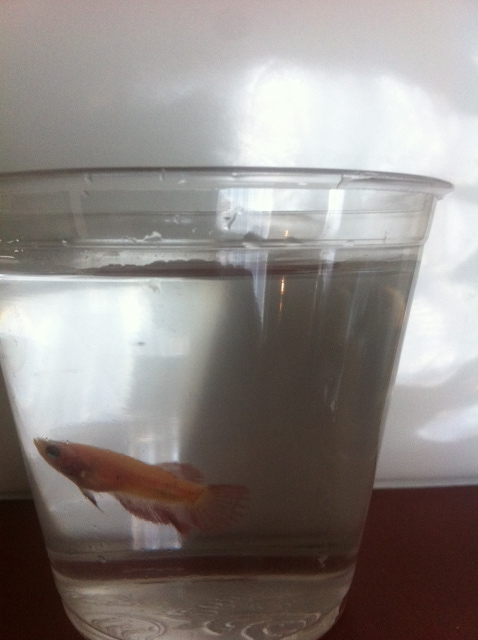 Black Spot/Outlining on Female Betta Picutre Update
QuestionQUESTION: Hello,
I recently purchased a female
Black Spot/Outlining on Female Betta Picutre Update
QuestionQUESTION: Hello,
I recently purchased a female
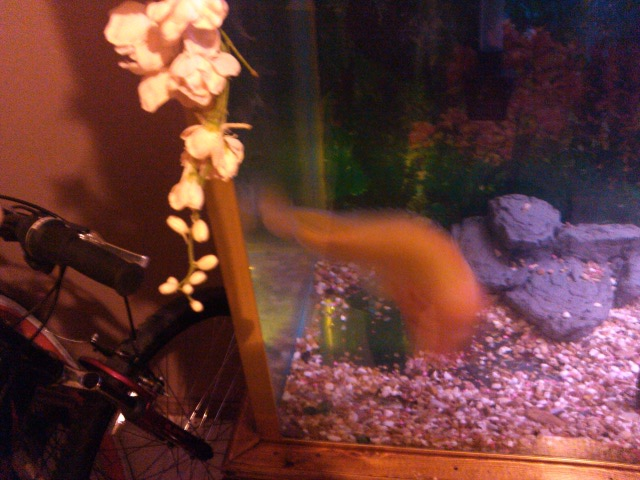 Is My Red Devil Cichlid Sick?
Question
This Is His Weird Swim This Is How He La
Is My Red Devil Cichlid Sick?
Question
This Is His Weird Swim This Is How He La
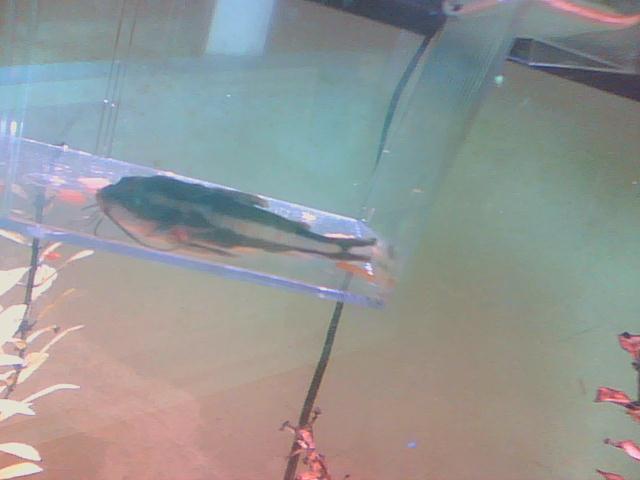 Half-dead fish
Question
Picture of my fish
I have a bottomfeeder whos
Half-dead fish
Question
Picture of my fish
I have a bottomfeeder whos
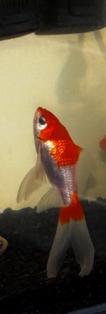 Vertical on the gravel
QuestionImage 2
Image 1
QUESTION: I dont
Vertical on the gravel
QuestionImage 2
Image 1
QUESTION: I dont
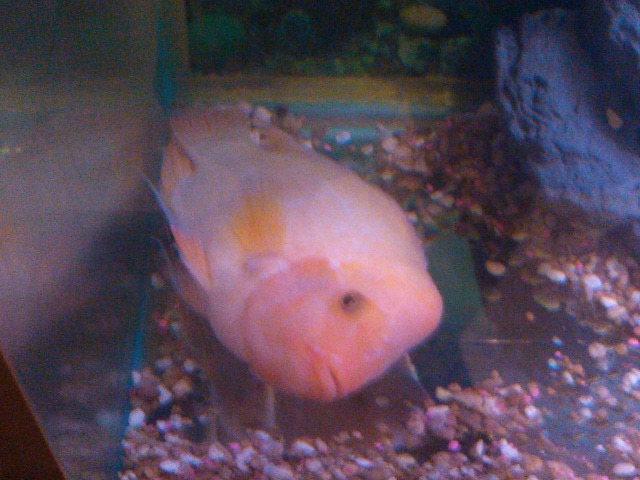 Red Devil Cichlid
Question
Red Devil Weird Swim
OK... Well,
Red Devil Cichlid
Question
Red Devil Weird Swim
OK... Well,